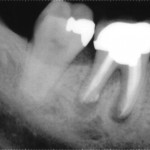
Middle mesial canals in mandibular first and second molars are a common occurrence. Knowing the location and the chance of middle mesial canals being present is important as it increases the success rate of root canal treatments.
The aim of this review is to determine the prevalence of middle mesial canals (MMCs) in mandibular first and second molars globally, using cone beam computed tomography (CBCT) as an assessment tool. This review also looks to see if factors such as the molar’s side, age, gender and geographic location of patients has an impact on the likelihood of a middle mesial canal to be present.
Methods
A review protocol was registered in the PROSPERO database which followed the most up to date guidelines for reporting items for systematic reviews. Medline/PubMed, Web of science, Scopus, SciELO and Google Scholar databases were searched using no filters (such as no time or language restrictions) between 15.11.22-21.11.22 to avoid bias. Keywords and strategy were developed in PubMed and used with other databases with minor changes in order to get more relevant studies, while duplicates were removed. All included studies were English language and cross-sectional in nature. The studies were quality assessed independently by the 2 authors using the Newcastle-Ottawa Quality Assessment Scale for cross-sectional studies – those of moderate-high quality were included. A meta-analysis was undertaken by pooling individual studies’ prevalence rates and calculating the respective odds ratio and confidence intervals (CIs). Tests of heterogeneity between different grouping factors (side, age, gender etc.) were undertaken utilizing the Chi2 and I2 tests. The statistical significance was set at P < .05 for all analyses.
Results
- 34 studies were included involving 13,349 mandibular first and 7,624 second molars.
- 21 studies were of high qualityand 13 studies of moderate quality.
- 27 studies reported a MMC prevalence rate of 4.4% (95%Cl: 3.5% to 5.3%) in mandibular 1st
- 18 studies reported a MMC prevalence of 1.3% (95%Cl: 0.08% to 1.8%) in mandibular 2nd molars.
- 13 studies showed a significantly higher MMC prevalence rate in 1st molars compared to 2nd molars.
- The impact of gender, age, geographic location, and molar’s side was also assessed, and no statistical differences were found (see table below).
| Factor | MMC in 1st molars | MMC in 2nd molars |
| Males | 2.9% | 0.8% |
| Females | 3.6% | 1.2% |
| Age <40 | 11.9% | 7.1% |
| Age >40 | 10.9% | 4.6% |
| Asia | 4.6% | 1.0% |
| Europe | 3.4% | 1.1% |
| Africa | 10.0% | – |
| America | 5.4% | – |
Conclusions
The authors concluded: –
On the basis of somewhat good evidence stemmed from 33 studies of high-to-moderate quality, the prevalence of MMC in mandibular first molar and, to less extent, in mandibular second molar is not uncommon, a matter that warrants careful exploring while treating these teeth in order not to missing this canal. It appears that the prevalence of the MMC in mandibular molars is not affected by gender, age, molar’s side.
Comments
The authors registered their review with the PROSPERO database and followed the most recent guidelines for reporting items for systematic reviews. Multiple databases were searched between 15th and 21st of November 2022. There were no restrictions in the search, however, limitations were still present. For example, the authors excluded all non-English language papers during the eligibility assessment. Another limitation was the fact that a lot of the studies used were of Asian and European origin while only a few were American and African. No studies in the Australian continent were found. These limitations reduce the likelihood of generalisability of the results to the global populations. There was no mention of the sampling techniques of the respective studies included this analysis. If a significant proportion of the studies undertook convenience sampling, this may have biased the results.
This review states that the overall global prevalence of MMC is more common in the first mandibular molars at 4.4% (95%Cl: 3.5% to 5.3%) [about 4 times more common] compared with in the second mandibular molars 1.3% (95%Cl: 0.08% to 1.8%). The difference was statistically and even clinically significant. The authors reported that 33 studies were included in the analysis, however, 34 studies were listed in the summary of included studies table and the supplementary table, and so this number was used in this review. Despite the small percentages, molars should always be checked for MMC during root canal treatment in order to avoid missing canals and decreasing the treatment success rate.
Links
Primary Paper
Al-Maswary AA, Almadhoon HW, Elkhateb A, Hamdallah A, Halboub E. The Global Prevalence of Middle Mesial Canal in Mandibular First and Second Molars Assessed by Cone Beam Computed Tomography: A Systematic Review and Meta-Analysis. J Endod. 2023 Jun;49(6):638-656. doi: 10.1016/j.joen.2023.04.008. Epub 2023 Apr 26. PMID: 37116828.
